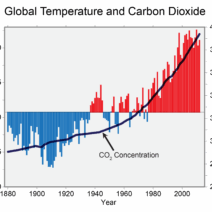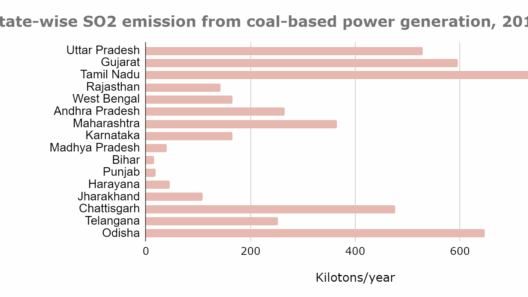Global warming, a dire reality that hangs over humanity like an ominous cloud, is a consequence of anthropogenic greenhouse gas emissions. The primary task ahead is not merely to acknowledge this elephant in the room but to devise actionable solutions. Physics, the perennial undercurrent of our universe, may hold the key to unlocking these solutions. With its principles, we can craft a robust arsenal against the relentless march of climate change.
The laws of thermodynamics, for instance, are foundational to our understanding of energy transformation and transfer. The first law, which states that energy cannot be created or destroyed, emphasizes the importance of energy efficiency. Countries and corporations must harness this principle to mitigate carbon footprints. By enhancing energy efficiency in industrial processes, we can decrease energy demand and, thus, the associated fossil fuel combustion. Every unit of energy saved is a step in a downward trajectory towards a significantly reduced greenhouse gas emission.
Moreover, consider the second law of thermodynamics, which discusses entropy — the measure of disorder within a system. In essence, as energy is converted from one form to another, some energy inevitably dissipates as heat, increasing entropy. This notion can unfurl a tapestry of solutions, particularly through advancements in renewable energy sources. Solar panels, wind turbines, and hydropower all utilize principles of physics to convert naturally occurring energy sources into usable power, generating far less waste and contributing to a lower entropy production rate. The transition to a renewable-dominated energy grid inevitably begins to paint our future in hues of sustainability.
Yet, the pivot to renewables is only part of the equation. The field of thermophysics, in particular, offers compelling potential for developing novel materials that can store energy more efficiently. Materials like aerogels and phase-change materials harness physical principles for thermal energy storage. Such innovations can revolutionize our energy systems, allowing surplus energy produced during peak periods to be stored and used when demand surges. This not only stabilizes energy supply but also lessens reliance on fossil fuel-backed energy generation.
In parallel, the principles of fluid dynamics — a branch of physics — can be harnessed to improve carbon capture technologies. Atmospheric CO2 extraction devices utilize knowledge about fluid flow, allowing them to efficiently capture carbon dioxide from the air. These installations operate similarly to creating a sponge to absorb water but on a macro scale. By understanding how air moves and disperses, scientists can optimize these devices, enhancing their efficacy in combating climate change by sequestering greenhouse gases directly from the atmosphere.
Moving beyond technological solutions, there’s the pressing matter of natural climate solutions, where physics plays an equally pivotal role. The study of ecosystems through the lens of biophysics reveals intricate energy exchanges between flora and fauna. Plants, capable of photosynthesis, convert solar energy into chemical energy, serving as a natural carbon sink. Thus, protecting and restoring forests, wetlands, and grasslands becomes not merely an environmental responsibility but a scientific imperative. The fundamental principles of physics reiterate the importance of ecosystems in buffering against atmospheric CO2 levels. The proliferation of biomass in these areas acts as a physical manifestation of energy storage on a planetary scale.
Furthermore, the concept of albedo, which refers to the reflectivity of surfaces, presents another opportunity to mitigate global warming. Urban areas, often characterized by dark surfaces, absorb more solar energy, contributing to heat islands. By using materials with higher albedo in urban planning — lighter-colored roofs, reflective pavements — we can alter heat absorption patterns. This seemingly simple change can lead to significant reductions in the complicity of urban environments in the broader phenomenon of climate change, cooling cities and linking them directly to physical principles such as energy absorption and radiation.
In the grand narrative of combating global warming, education and public awareness emerge as ancillary weapons in our arsenal. An understanding of physical principles enhances comprehension of climate science, catalyzing more substantial action from communities and individuals. Utilizing physics as a framework for understanding complex phenomena individualizes and contextualizes climate issues. A populace informed by scientific literacy becomes a formidable entity in the climate conversation, wielding knowledge like a sword against ignorance and passivity.
In conclusion, while the specter of global warming looms large over us, physicists, engineers, and environmentalists are collectively weaving solutions that not only address the symptoms of this crisis but also tackle its fundamental causes. By leveraging the laws of physics — be it through renewable energy technologies, innovative materials, or enhanced carbon capture techniques — we harness the quintessence of the universe itself to rewrite our future. The pathway to a sustainable existence lies not just in recognizing the gravity of climate change but embracing the principles of physics that empower us to combat it effectively. As we strive for balance in our ecosystem, each principle of physics iteratively carves a path toward resilience, sustainability, and hope.








